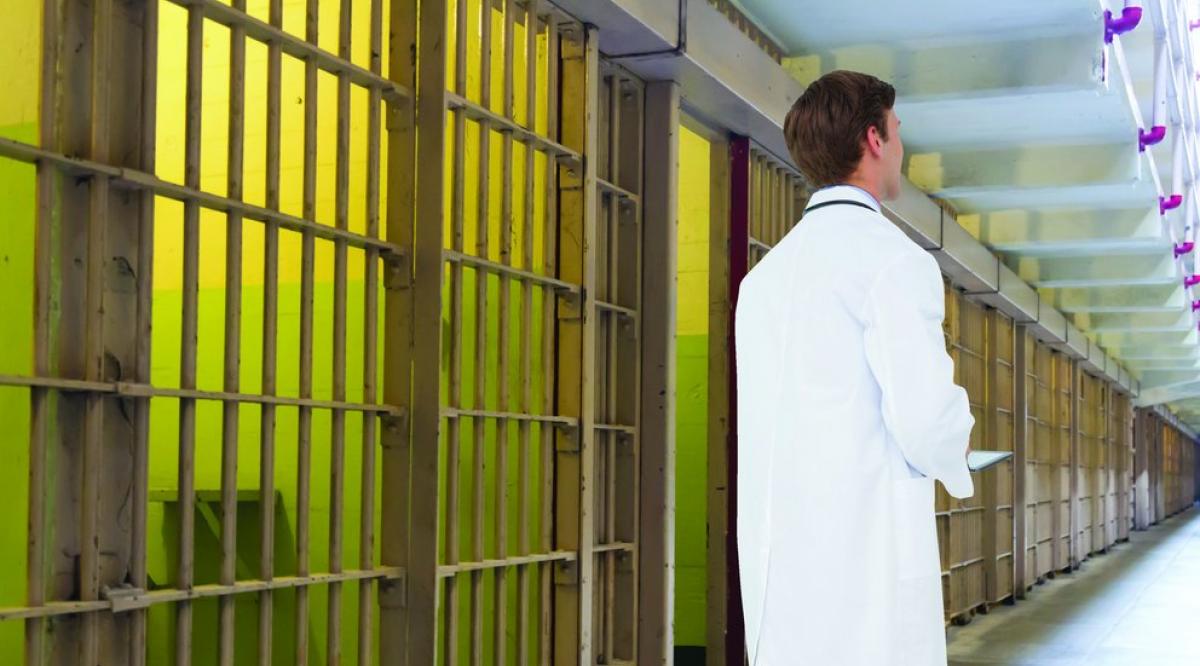Editor’s Note: Throughout 2015, an AAMCNews series explored how medical schools and teaching hospitals are addressing social determinants of health in their communities through research, clinical care, and education.
Sundeep Virdi, MD, JD, admitted he was nervous the first time he saw patients who were behind bars even though correctional officers were nearby. A third-year psychiatry resident at the University of Connecticut School of Medicine, Virdi recalled that in one facility, inmates wandered around the cellblock where he worked. His office was a converted cell.
Despite his initial apprehension, Virdi said the experience he gained practicing in prisons was invaluable. Having to separate an inmate’s crime, which Virdi generally did not know, from that individual’s health concerns “definitely helped me in terms of objectivity and focusing on patient care,” he said. “It was one of the more interesting things I’ve done in residency.”
At academic medical centers (AMCs) across the country, practitioners and students are reaping similar lessons from work in the criminal justice system. According to advocates, AMCs have much to offer—and gain—from partnering with correctional facilities. Correctional systems in a few states—such as Connecticut, Georgia, New Jersey, and Texas— have contracted with AMCs to provide health care for inmates. Elsewhere, AMCs provide specialty care, emergency medical services, or telemedicine to those in prison.
The authors of a study published in the January 2015 edition of Academic Medicine suggested that AMCs have a lot to offer corrections facilities, including health-related “expertise in evaluation, quality improvement, evidence-based practice, and implementation science.”
At the same time, AMCs can leverage their relationships with correctional systems to provide educational opportunities for students and residents, as well as research grist for faculty. In addition, medical schools, especially those that receive public funding, are able to fulfill their mission of serving their states and regional communities when they provide health care in correctional facilities, the Academic Medicine article noted. Through its contract with the state’s Department of Correction, UConn Health at the University of Connecticut School of Medicine leveraged $92 million in the current fiscal year to support a range of infrastructure, residency, and faculty positions.
“There is a very significant linkage between social determinants for individuals who are leaving prison and jail and their downstream health. We have a responsibility to train our health professionals on the issues that these populations face and strategies to try to help provide effective care.”
Warren J. Ferguson, MD, University of Massachusetts Medical School
Prisons also provide settings that allow health care providers to practice public health and population based care in the real world that can help to reduce health disparities, said study coauthor Robert Trestman, MD, PhD, a professor of medicine, psychiatry, and nursing and executive director of UConn Health’s Correctional Managed Health Care.
“Students begin to understand that we can deliver effective and efficient health care that is also cost managed, without compromising quality,” Trestman said. In addition, working in correctional health provides practice in team-based care and an understanding of what it is like to work with limited resources, he added.
Addressing health disparities
Health disparities are common in the prison population. Inmates have higher rates of chronic medical conditions, infectious diseases, and mental health challenges than the general population. Many prisoners come from environments where health disparities are endemic and access to care is limited. According to the U.S. Department of Justice, 95 percent of state inmates will one day be released, with many returning to underserved areas, sometimes homeless and unemployed, which can set the stage for more health problems.
Warren J. Ferguson, MD, a professor of family medicine and community health at the University of Massachusetts Medical School, argued that AMCs have a moral obligation to address the health needs of those in correctional facilities. “There is a very significant linkage between social determinants for individuals who are leaving prison and jail and their downstream health,” he said. “We have a responsibility to train our health professionals on the issues that these populations face and strategies to try to help provide effective care.”
There are many voices calling for the development of correctional health research, which could bolster federal efforts to address health disparities. National Institutes of Health funding for criminal justice health research is relatively small, reported Brie Williams, MD, MS, an associate professor of medicine in the Division of Geriatrics at the University of California, San Francisco (UCSF), in a recent paper in the Annals of Internal Medicine.
“There’s an incredible opportunity for [academic medicine] to interface with the criminal justice system and lend our knowledge in developing evidence based practice to the systems that are in need of that,” Williams said. In December 2014, Williams received the President’s Research Catalyst Award from Janet Napolitano, JD, president of the University of California (UC) system, to help fund a multidisciplinary UC system consortium focused on criminal justice health care research.
According to Ferguson, many medical students are deeply committed to contributing to correctional health. Reflecting that enthusiasm, two fourth-year medical students at the University of Massachusetts, Rahela Aziz-Bose and Julia Randall, created an elective on correctional health for medical and nursing students. “Inmates tend to be ethnically diverse and medically underserved and have extremely stark health disparities,” Aziz-Bose said. “It’s very important to understand the health concerns that these individuals face.”
Randall, who is interested in primary care and underrepresented populations, said she anticipates working with patients who have been incarcerated or whose family members have been touched by the correctional system. “I will be in communities where this is an epidemic, so I think it is vital for me to know all I can about their challenges,” she said.
Moreover, the care and health care education inmates receive can even cause a shift in their approach to life, Trestman said. “It can make a huge difference in terms of their behavior when they go back to the community.”
This article originally appeared in print in the July/August 2015 issue of the AAMC Reporter.
